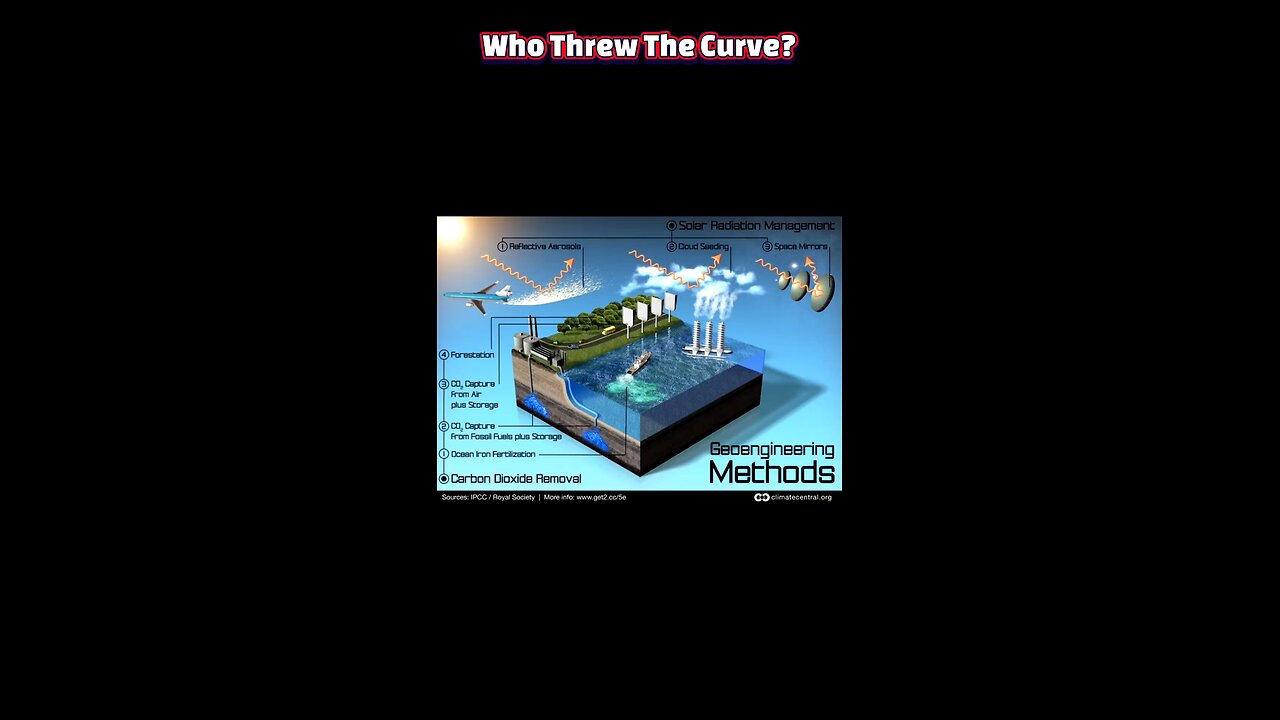Premium Only Content

Geoengineering: Humanity’s Ultimate Hack or Epic Fail?
#Geoengineering #ClimateCrisis #ClimatePolicy #HubrisOrHope #EarthHack #SaveOurPlanet #SciHumor - #EcoTech
The unprecedented rise in global temperatures has prompted climate scientists and policymakers to weigh every available tool, including geoengineering. This suite of technologies aims to manipulate Earth’s climate system, either by removing carbon dioxide from the air or reflecting sunlight away. Proponents hail geoengineering as a rapid-response lifeline, while critics warn of unforeseen ecological upheaval. Framing this debate in terms of hope versus hubris reveals the core tension in modern climate policy.
The most prominent geoengineering approaches fall into two categories: solar radiation management and carbon dioxide removal. Solar reflection techniques, such as stratospheric aerosol injection or marine cloud brightening, promise swift cooling effects within months. Meanwhile, direct air capture and enhanced carbon sinks offer potential to permanently lower greenhouse gas concentrations over decades. By addressing both symptoms and causes, geoengineering could complement emission cuts and buy time for sustainable transformations.
Yet the promise of rapid cooling and carbon extraction comes with staggering risks and uncertainties. Altering atmospheric chemistry or albedo at planetary scale risks unpredictable weather patterns, monsoon disruption, or biodiversity loss. Carbon removal technologies may also lock in dependence on industrial processes that could never scale affordably or equitably. Most alarmingly, intervening in one part of the climate system could trigger cascading harms elsewhere, leaving vulnerable regions to bear the brunt of our experiments.
Beyond environmental peril lies a deeper moral quandary: does geoengineering represent scientific ingenuity or sheer hubris? The sheer power to tamper with Earth’s thermostat raises questions of consent, equity, and global governance. Who decides when to deploy these technologies, at what scale, and under whose authority? Absent robust international frameworks, geoengineering could become geopolitical poker, weaponizing planet-scale interventions or absolving nations from their emission reduction commitments.
Geoengineering straddles the line between a pragmatic stopgap and a reckless gamble with the only habitable planet we know. Its role in climate policy should be neither dismissed out of hand nor embraced as a silver bullet. Instead, targeted research and transparent governance must inform a cautious path forward that prioritizes emission cuts, adaptation, and equity. In confronting climate risk, humility as much as innovation will determine whether geoengineering becomes humanity’s salvation or its greatest folly.
-
 1:39:50
1:39:50
Graham Allen
3 hours agoOur 1,000th Episode! Epstein AGAIN! The TRUTH About Our Movement! + JD Vance Must Be 48!
150K707 -
 2:59:40
2:59:40
Wendy Bell Radio
7 hours agoPass The Blame
48.3K82 -
 LIVE
LIVE
Caleb Hammer
11 hours agoI F*cking Hate Them | Financial Audit
411 watching -
 LIVE
LIVE
The Big Mig™
2 hours agoLetter of Marque & Reprisal Authorization Act LFG!
5,017 watching -
 1:08:12
1:08:12
Chad Prather
22 hours agoThe Cost of Calling: Why Some Leave and Others Rise
79.5K20 -
 4:14
4:14
Gun Owners Of America
2 hours agoMissouri's 2A Protection Act Is Dead—The DOJ Killed It.
11.4K10 -
 2:37:05
2:37:05
The Chris Salcedo Show
17 hours ago $3.96 earnedCounting The Days 'Til Christmas
39K1 -
 15:13
15:13
Demons Row
15 hours ago $2.58 earnedRiding Away from Everything I Knew | MotoVlog
39.5K2 -
 8:13
8:13
Degenerate Jay
17 hours ago $3.55 earnedAssassin's Creed Black Flag Remake Just Keeps Leaking 😂
37.2K1 -
 3:35
3:35
Blackstone Griddles
20 hours agoPork Dumpling Smashed Tacos on the Blackstone Griddle
26.6K1